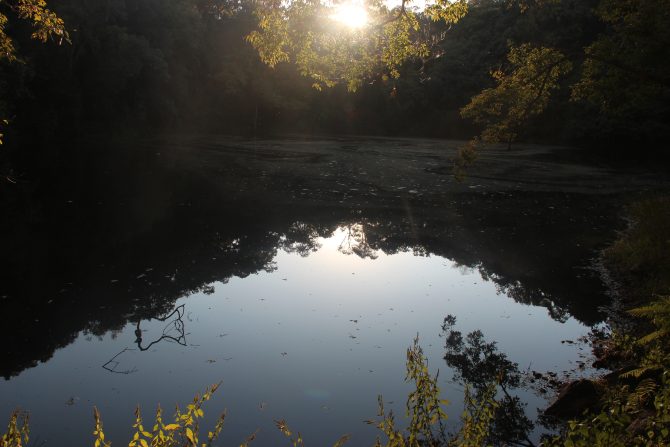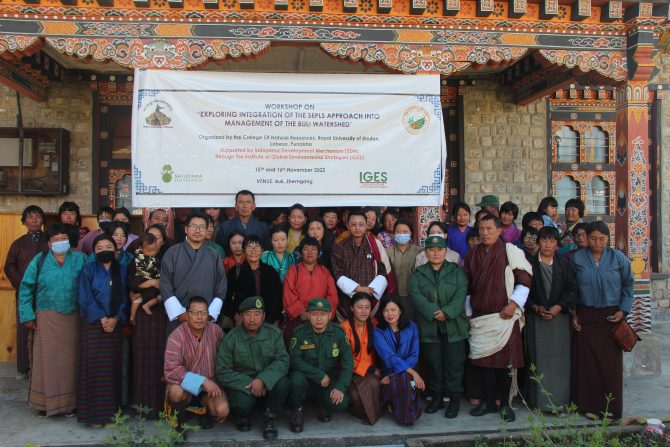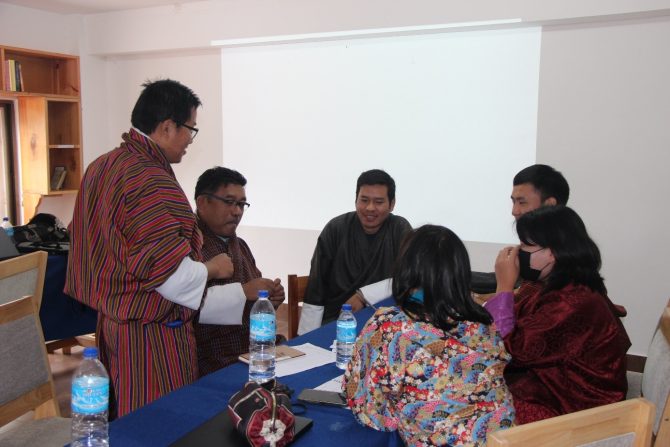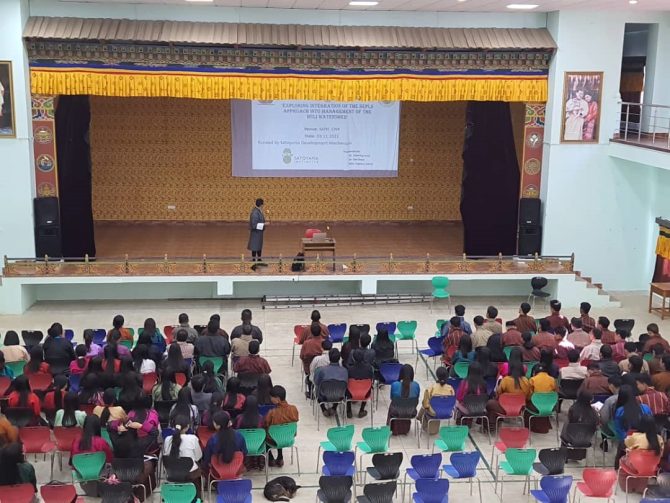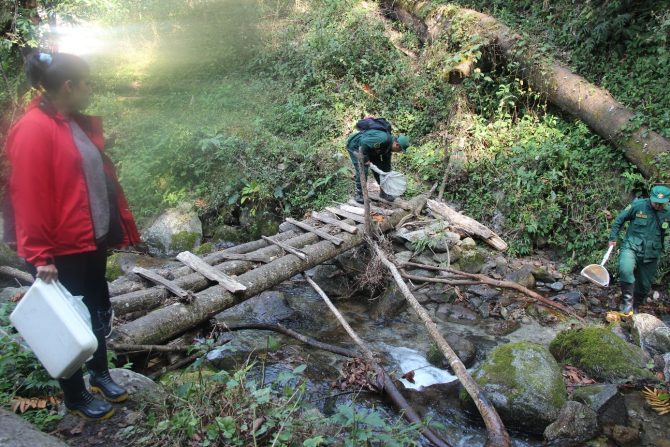2021 BHUTAN
Exploring integration of the SEPLS approach into management of the Buli watershed
College of Natural Resources, Royal University of Bhutan
Capacity building
Landscape
Overview
The Buli watershed lies within the Buli chiwog under Nangkor gewog in Zhemgang dzongkhag, Bhutan. It is a declared watershed management area under the Royal Society for the Protection of Nature (RSPN) and Watershed Management Division (WMD), and the plan is active from July 2018 to June 2023. There are rich broad-leaved forests, and wetlands such as marshes, lakes and streams. The local community is the Kempa ethnic group, with over 100 households of around 800 people in Buli village. They are subsistence farmers. Buli Tsho (lake) and the surrounding forest are considered abodes of deities by the local people, and it is declared a heritage forest by the Department of Forest and Park Services (DoFPS). There is also a biological corridor in parts of the watershed. Agricultural land constitutes only 7% of the watershed, with 4% taken up by Kamzhing (dry land), 3% by Chuzhing (irrigated paddy fields), and 0.95% for building. Local communities practice La Dam (closing of mountain passes) and Tsho Dam (closing of lakes) as a traditional means of preventing natural disasters (windstorms, storms and etc.) that occur during the harvest season. This project aimed to raise awareness about the possibility of incorporating Satoyama perspectives into the management of the Buli watershed and other watersheds in Bhutan.
To achieve the project aim, the following activities were conducted:
- A two-day workshop targeted at Buli community members on the Satoyama perspective regarding watershed management planning and their traditional nature conservation practices in Buli.
- A two-day workshop targeted at some officials and academic experts from CNR and Royal Thimphu University (RTC) on the Satoyama initiative and the role of macroinvertebrates in water quality monitoring in Paro, Bhutan.
- A workshop targeted at students of CNR on the Satoyama initiative.
- Field sampling in four streams and two lakes in the Buli watershed.
Key achievements
- 100 people from the Buli community, 2 officials from NBC and RSPN, 16 academic experts from CNR and RTC, 250 students of CNR and 2 officials from Zhemgang Divisional Forest Office participated in each workshop.
- Through their participation in the workshops, many people from different sectors of Bhutanese society were exposed to the idea of Satoyama, and realized the importance of maintaining similar ideas in different parts of Bhutanese society to harmonize with nature.
- From the field sampling within the Buli watershed, baseline data on the number of families of macroinvertebrate in each sampling site was established for the first time.
- The community of the Buli watershed and local forestry officials were exposed to the usefulness of macroinvertebrates as bioindicators to measure the success of watershed management.
- The cooperative relationship between the RSPN and CNR led to the proposal of a new project.
Lessons
- By investigating the local conservation practice and understating what they mean to the people and how they help people live in harmony with nature, people can appreciate the SI perspective. This can reduce the work of project implementers because local communities will regard the SI and SEPLS conservation as their traditional practices.
- The macroinvertebrate can be a good bioindicator for monitoring the health of aquatic ecosystem as well as help conserve freshwater ecosystem in relation to agriculture practices where water from irrigated terraced paddy fields is released back directly to the streams or waterbodies.
Project location
Organisation
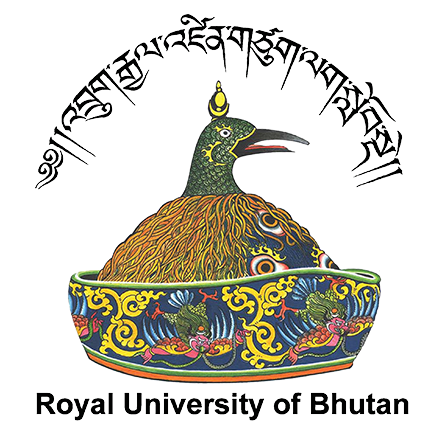
College of Natural Resources, Royal University of Bhutan
- Sector
- Academic, Educational and / or Research Institute
- Country
- Bhutan
- Website/SNS
- https://www.cnr.edu.bt/
Relevant projects
Projects of the same year
Aichi Biodiversity Targets
Aichi Biodiversity Targets
-
Awareness increased
-
Biodiversity values integrated
-
Sustainable agriculture, aquaculture and forestry
Sustainable Development Goals
Sustainable Development Goals
-
Clean water and sanitation
